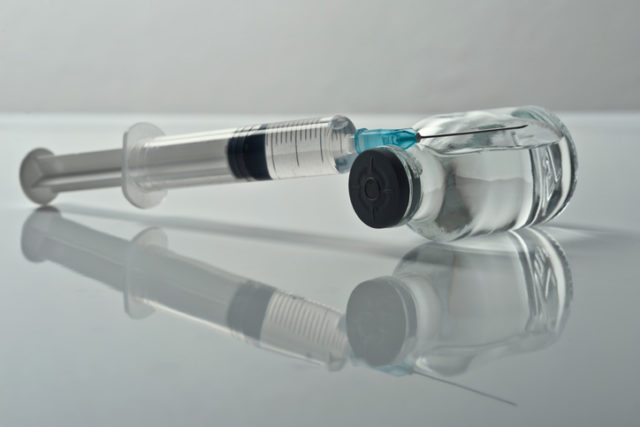
There is a substantial amount of evidence that shows patient preference for oral alternatives to injectable therapies is reshaping therapeutic markets, as noted in part one of this two-part series. Catering to that preference can have an immense impact not only on drugmakers’ product sales and revenue but also on treatment adherence and potential clinical outcomes. For biologics, the so-called “holy grail” of patient preference innovation is transforming injectables into orally administered treatments.
If making injectable therapies into pills were simple, every drug on the market would have an oral alternative. Many attempts at oral therapies have failed due to the intricacies of our physiological environment and the complicated structures of the molecules themselves. The drugs are easily and rapidly degraded by the highly acidic environment of the stomach if not properly protected, and it can be difficult to ensure enough of the drug substance is absorbed via the intestinal tract. This is especially the case for biologics, which tend to be larger and more fragile than small molecules.
One common approach to meet patient demand for an oral alternative – though perhaps most expensive and time-consuming – is developing a novel small molecule program. Within the last three years, AbbVie (with Ubrelvy) and Celgene/Amgen (with Otezla) have proven their small molecule oral therapies could successfully compete against market-leading biologics. Some of the latest attempts include GSK’s Jesduvroq for anemia caused by chronic kidney disease and Menarini Group’s oral SERD for breast cancer, while companies such as DICE Therapeutics and Structure Therapeutics are also developing promising approaches.
However, the small molecule development approach can come with high risks. Small molecules lack the high specificity of biologics and can introduce off-target effects and unwanted side effects – JAK inhibitors are a notable example. As new chemical entities or NCEs, these new therapies need to run the full gamut of safety, tolerability, and efficacy studies in order to get approval. Furthermore, this approach is only feasible for certain therapies.
Changing the formula
Drug developers have long sought to develop a chemistry-based method for oral biologics, with limited success. This approach typically involves adding an additional molecule to the drug formulation, such as a protease inhibitor to protect peptides in the gastrointestinal tract, or an absorption enhancer to improve uptake in the intestinal lining. Similar technology has recently shown promise in orally delivering a candidate Covid-19 vaccine.
Among the chemistry based approaches, there have been more failures than successes. Most recently, Oramed announced a failure of their phase III study for their oral insulin product (ORMD-0801). This outcome was unsurprising given the ultra low-bioavailability of their formulation. In their trial, patients were dosed daily with 8 mg of their insulin. But despite this incredibly high dose – equivalent to over 230 units of insulin – they were unable to show statistically significant movement in HBA1C over placebo.
Rybelsus, the oral semaglutide developed by Novo Nordisk, is a rare instance of reformulation success for a biologic. To formulate Rybelsus, Novo Nordisk combined its Ozempic (semaglutide) with a small fatty acid derivative that temporarily modifies pH for more hospitable gut conditions, and improves absorption across gut mucosa. Even with the improved absorption, Rybelsus® only has a bioavailability between 0.4-1% compared to subcutaneous injections, and the approach has not yet been replicable for delivering other biologics via the stomach.
Furthermore, Novo Nordisk recently submitted new regulatory filings for higher oral doses of their semaglutide formulation for diabetes, in the 25 to 50 mg per day range, up to 350 mg per week. When compared to Wegovy, an injectable semaglutide medication dosed at 2.4 mg per week with 67% higher efficacy, this significant increase in dose clearly shows the limitation to this technology.
Several companies are instead targeting delivery in the small intestine, in most cases using specialized enteric coatings that can prevent capsules from premature digestion in the stomach. Chiasma (now part of Chiesi Farmaceutici S.p.A.) took this approach with Mycapssa (octreotide), the first approved oral somatostatin analog for patients with acromegaly. Its capsules also include a permeability enhancer to improve peptide uptake in the small intestine.
However, similar to Rybelsus, to obtain comparable bioavailability to that of a subcutaneous injection, the oral formulation uses 200 times the dose. This is fairly common with chemistry-based approaches, since the overall bioavailability of the drug can be as low as 0.1%, making it extremely difficult to reach therapeutic levels without significantly increasing the dose. For that reason, Mycapssa is only given to patients who have already been managed successfully on injectable therapies.
Robotic possibilities
The commercial success of Rybelsus and Ubrelvy demonstrate the impact of meeting patient preferences. But like many other approaches, each may be limited to a small subset of molecules and indications – and cause other issues due to their formulations.
Mechanical approaches to changing the route of delivery, such as miniaturized injectors or motors to power a tunneling motion, have the potential for a broader wave of oral biologic delivery. These so-called robotic pills (robopills) provide a way to deliver a dose across gut barriers and into circulation with more accuracy and significantly higher bioavailability.
The most advanced mechanical method for oral delivery is an oral robotic capsule that is designed to deliver any biologic drug directly into the intestinal wall via a dissolvable microneedle. This approach has demonstrated safety, tolerability, and high bioavailability in clinical trials, with data showing drug bioavailability comparable to or higher than a subcutaneous injection, without having to dramatically increase the dosage. The capsule is protected by a special pH-sensitive polymer coating, which ensures the pill arrives in the small intestine without first dissolving in the stomach.
Because robopills are not tied to a specific chemistry or limited to specific types of molecules, they can deliver a range of biologics including hormones, proteins and antibodies, for a variety of conditions. This creates a platform technology opportunity, with the potential to deliver almost any molecule to treat millions of patients suffering from chronic diseases.
When oral alternatives to injectables become a widespread reality, we believe patients and physicians will respond eagerly and push the market as swiftly and forcefully as they have across other segments in recent years.
Photo: Francesco Carta fotografo, Getty Images








